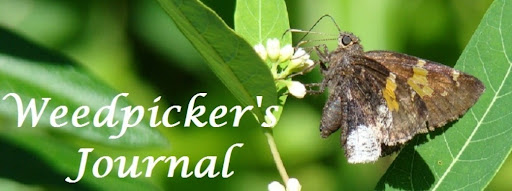Since most of our American trees have been cut over once or twice by now, any area with 200 year old-plus trees is a stand-out worth protecting for future generations.
In Ohio, Johnson Woods near Orville is one of our better examples of an Old Growth Forest. The Clear Fork State Nature Preserve in Mohican Forest also has some very old White Pine and Eastern Hemlock which are protected from timbering. Old Growth Forests are the rarest wooded habitat left in Ohio, with only a handful of places qualifying. Any grove of ancient trees is worth protecting for posterity.
 |
| Monterey Cypress at Carmel-on-the-Sea, California |
Click here to read the L.A. Times' story.
 |
| Redwood at Julia Pfieffer Burns State Park in Big Sur, California |
The only worthy complaint about trees this size is the difficulty they present in getting a meaningful photo. One can either shoot the top or the trunk, but rarely can an amateur photographer make an actual reflection of their enormous size.
Water Tupelo, Nyssa aquatica at Congaree.
If seeking out big trees appeals to you, the Congaree National Park near Columbia, South Carolinia could be your Nirvana. The giant Water Tupelo, Nyssa aquatica are one of the smaller "big trees" but the erratically shaped tops remind us of our much smaller Blackgum, Nyssa sylvatica which we know in Ohio. Like many aquatic trees, the buttressed base of this Tupelo is enlarged and appears swollen.
A past State Champion Loblolly Pine in Congaree.
Once thought to be the largest Loblolly Pine, Pinus taeda in South Carolina, this grand tree stands at over 150 feet tall and is the former State Champion. It is easily found, adjacent to the raised boardwalk at Congaree, where the new Grand Champ is off the beaten path. A personal photo of mine shows that large knot to be slightly below my shoulder level. Figure that knot at five foot tall and the trunk at least 15 foot around.
 |
Muir Cypress, Corkscrew Swamp, Florida
|
There are plenty of Bald Cypress, Taxoduim distichum to be found in Congaree, but my current favorite is located in Corkscrew Swamp, near Naples, Florida. It is named after conservationist John Muir. Their are numerous Cypress marked along the boardwalk, each grander than the next. This preserve is operated as an Audubon refuge, but I was too distracted by the trees to do much birding. Good thing I had Greg Miller along on this trip to keep me on track!
 |
| Eastern Cottonwood, Lakeside Ohio |
Just this week I noted a grand dame in Lakeside, Ohio. This Eastern Cottonwood, Populus deltoides is not our state champion, but it certainly attracted my admiration. Again, it is so large one can scarcely take in the whole thing. One might guess this tree was on the shore of Lakeside long ago when the first Methodists came to town. It is a worthy piece of natural history in this Historic Landmark and Chautauqua.
 |
| Weedpicker as a Tree-hugger |
Just for a size comparison I wrapped my arms around the curves of one half of this mighty giant. It wouldn't qualify as a champion tree with the duel trunks. However, it is no less impressive to me. It would take four or five people to successfully link hands around this tree. Cottonwoods are a relatively fast growing tree, so this is probably much younger than the smaller, but still impressive oaks and hickories found throughout Lakeside.
If trees could talk, we might gain a better perspective of all that the aged carbon-based life forms have witnessed. Some were here when the pilgrims landed at Plymouth Rock. Others were present for the French and Indian Wars, and during O. H. Perry's Battle for Lake Erie.
If we could listen to their experiences, we might gain a little wisdom from these giant, living, breathing wonders. I am humbled in their presence and always looking forward to meeting another big tree.



No comments:
Post a Comment